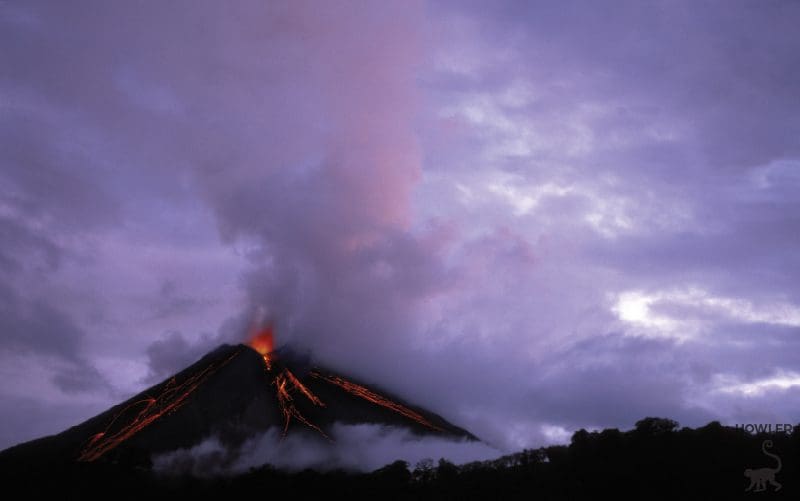
Life Under the Volcanoes: Costa Rica and the Ring of Fire
Life Under the Volcanoes: Costa Rica and the Ring of Fire. If you live in Costa Rica long enough, it becomes almost boring. “Honey, did you feel that one?” Earthquakes, strong and not so strong, become part of your life here. And in recent years, if you live in the Central Valley, so does sweeping volcanic dust from your porch … or running outside to watch Turrialba or Poás erupt. But why? Why the earthquakes and volcanoes?
CLICK: SEE THIS ARTICLE IN THE DIGITAL MAGAZINE
Right place, right time
Costa Rica sits on what is called the Ring of Fire, a horseshoe-shaped loop stretching 40,000 kilometers from New Zealand to Chile, passing through the coasts of Asia and the Americas.

The Ring of Fire contains more than 450 active volcanoes and about 90 percent of the world’s earthquake sites. It’s all due to the geologic phenomenon of “plate tectonics” — pieces of the earth’s outer crust colliding and grinding against each other. In the Ring of Fire, these interactions occur between the huge Pacific Plate and smaller tectonic plates such as the Philippine Sea Plate (or three others in Costa Rica’s case). The impact, in what are known as subduction zones, causes magma uplift, volcanoes and faulting.
Wait … what did I just say? Tectonic? Plate? Subduction? Magma? Faulting?
I’m getting ahead of myself. Let’s start at the beginning.
Costa Rica today has
40 extinct volcanoes
and five active ones.

Earth reinvents itself
For billions of years, the earth has been reinventing itself. Huge masses of molten rock, called magma, arise from deep inside our planet. Then, after cooling into a solid crust, they travel along the earth’s surface before sinking back down. This is the process known as plate tectonics, derived from the Greek term tectonic meaning “to build.” Tectonic plates are the massive moving slabs — a dozen in all — that make up the earth’s outer layer. A useful analogy is that of a cracked egg, with the plates being pieces of shell.
Like a giant conveyor belt, the rising and outpouring of hot rock from inside the earth adds new material to tectonic plates; this is called mantle upwelling. Over time, the cooling plate becomes thicker and heavier. Ultimately, after millions of years, the oldest, coolest parts of the plate sink back into the earth’s mantle — the thick, mostly solid, rocky layer between the crust and core — where they remelt again. Observing a lava lamp will give you some idea of how this works.
Naturally, the movement of plates causes significant action and impact, for the most part at the edges of the plates. These collision points where the plates crash against each other are called subduction zones.
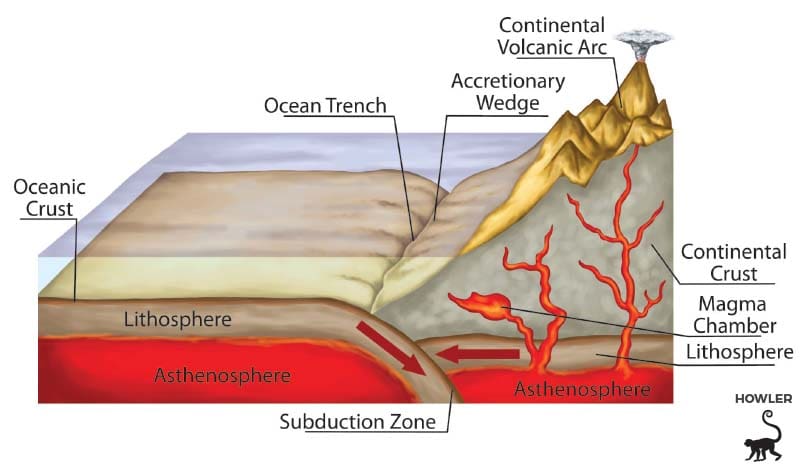
Oceanic crust, composed of magma cooled under the ocean, is denser than air-cooled continental crust. Some tectonic plates transport both continental crust and oceanic crust, while others contain just one type of crust. At its subduction zone, oceanic crust usually sinks into the earth’s mantle beneath lighter layers of continental crust. Abutting edges create deep ocean trenches, while the other sides rise as mountains.
In some instances, plates slide past each other at places known as faults. The San Andreas Fault in California is a famous example. Although fault movement is usually very slow, more dramatic occurrences can trigger earthquakes. In recent years, Costa Rica has experienced earthquakes caused by fault movement in Nicoya and Golfito.
Tectonic triple threat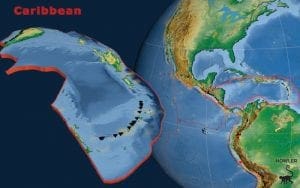
As part of the Ring of Fire, Costa Rica is affected by three tectonic plates. On the east is the Caribbean Plate, subducted under it on the west the Cocos Plate, and — just for added fun — the Nazca Plate is pushing the whole works to the northwest. Earthquakes in this country are caused by the downward movement of the Cocos Plate, plus the slippage of all three plates to the northwest. The subduction zone on the west side of Costa Rica is also what caused the uplift that created its mountain ranges … and volcanoes.
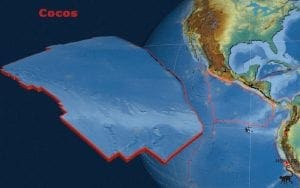 Volcanoes are another common occurrence in a subduction zone. As the crust and the plate get dragged down deeper into the planet, fracturing and melting start to occur. Hot magma from inside the earth can rise through these cracks and force its way to the surface, causing a volcano. If the fissure is stable for a period of time, the volcano can build itself into a mountain. Poás and Irazú, for example, are almost 3,000 meters high. As the plate moves, however, the cracks move in turn. That is why some volcanoes change eruption sites — notably, Rincón de la Vieja has three different old craters — while others, like Barva Volcano, stop altogether and become extinct.
Volcanoes are another common occurrence in a subduction zone. As the crust and the plate get dragged down deeper into the planet, fracturing and melting start to occur. Hot magma from inside the earth can rise through these cracks and force its way to the surface, causing a volcano. If the fissure is stable for a period of time, the volcano can build itself into a mountain. Poás and Irazú, for example, are almost 3,000 meters high. As the plate moves, however, the cracks move in turn. That is why some volcanoes change eruption sites — notably, Rincón de la Vieja has three different old craters — while others, like Barva Volcano, stop altogether and become extinct. 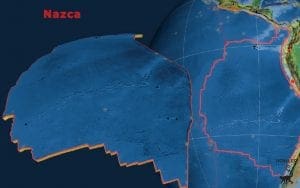
Costa Rica today has 40 extinct volcanoes and five active ones: Rincón de la Vieja, Arenal, Poás, Irazú and Turrialba. Drawing a line through those five active volcanoes, you can see where the Cocos Plate is being pulled under the Caribbean Plate. Recently, all of Costa Rica’s active volcanoes except Arenal have shown signs of new activity. However, with no scientific correlation between volcanoes yet proven, activity in one is no indication of another one erupting.
Plates, subduction zones, faults and volcanoes — all these forces of nature combine to give us both the beauty and the danger of living under the volcanoes here in Costa Rica.
Rincon de la Vieja – Things to do
4×4 Lake Arenal – road to El Castillo
Lucky Lovers Leap into an adventure of a lifetime
Lake Arenal – Lost Canyon Adventure
Gone Fishing: worst day fishing beats the best day working
Seven Days in Costa Rica: Arenal, Dominical and More
Lake Arenal: Safari River Float is a slow boat to paradise
Gone Sailing in Guanacaste Costa Rica
Cocos Island, Costa Rica’s treasure
Stand Up Paddle boarding SUP
ATV Tours, Take the road not taken
Deep Sea Fishing, Fun and Flamingo Costa Rica
White water rafting in Costa Rica
Scuba Diving in Costa Rica
Costa Rica Combo Adventure Parks
Authentic Costa Rica: What to do in rural Bijagua
Blue River Resort and Hot Springs
